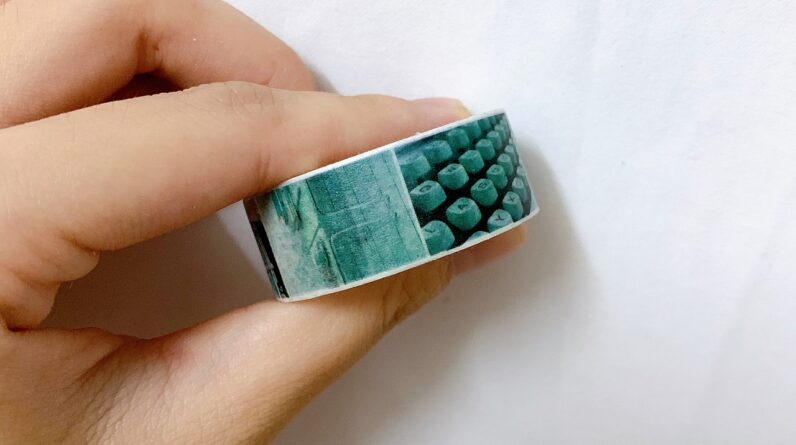
In “Sustainable Crafting: Embracing Eco-Friendly Materials,” we delve into the exciting world of eco-friendly crafting. Together, we’ll explore how using sustainable materials can transform our creative projects while also benefiting the environment. From repurposing everyday items to discovering innovative resources, we’ll uncover tips and ideas that make crafting both fulfilling and responsible. Let’s embark on this journey to embrace sustainability and make our crafts not only beautiful but also kind to our planet.
Have you ever wondered how our crafting habits impact the environment? As passionate crafters, we love to create beautiful, unique pieces. However, it’s essential that we consider the long-term effects of the materials we use on our planet. Let’s dive into the world of sustainable crafting and explore eco-friendly materials that can help us create masterpieces while also caring for Mother Earth.
Understanding Sustainable Crafting
Sustainable crafting isn’t just a trend; it’s a movement towards more mindful and environmentally responsible use of materials. By choosing sustainable options, we not only reduce waste but also promote healthier ecosystems.
What is Sustainable Crafting?
Sustainable crafting revolves around using materials and methods that have minimal negative impacts on the environment. This involves rethinking our sources, increasing the longevity of our projects, and being aware of the lifecycle of crafting materials.
The Importance of Sustainability in Crafting
Sustainability plays a crucial role in preserving our planet for future generations. By opting for eco-friendly materials, we help to minimize pollution, reduce the strain on natural resources, and support ethical practices in production.
Eco-Friendly Materials in Crafting
Our first step towards sustainable crafting begins with choosing the right materials. Let’s explore some popular eco-friendly materials that can make a huge difference.
Natural Fibers
Natural fibers such as cotton, wool, and hemp decompose faster than synthetic ones, making them an excellent choice for sustainable crafting.
| Material | Source | Benefits |
|---|---|---|
| Organic Cotton | Grown without pesticides | Biodegradable, less environmental impact |
| Wool | Sheep | Renewable, biodegradable, insulative |
| Hemp | Hemp plant | Fast-growing, durable, versatile |
Recycled Materials
Recycled materials breathe new life into waste products, reducing the need for virgin resources and contributing to a circular economy.
| Material | Source | Benefits |
|---|---|---|
| Recycled Paper | Waste paper | Saves trees, reduces landfill waste |
| Recycled Fabric | Textile waste | Reduces waste, supports circular economy |
| Recycled Plastics | Plastic waste | Reduces pollution, saves resources |
Biodegradable Materials
Biodegradable materials break down naturally, resulting in less long-term waste in landfills.
| Material | Source | Benefits |
|---|---|---|
| Bamboo | Bamboo plant | Fast-growing, biodegradable, strong |
| Cork | Bark of cork oak tree | Renewable, biodegradable, recyclable |
| Natural Dyes | Plant and mineral-based | Non-toxic, biodegradable, reduced chemical use |
Upcycled Materials
Upcycling involves creatively reusing and repurposing materials, giving them a new life instead of discarding them.
| Material | Source | Benefits |
|---|---|---|
| Wood Pallets | Shipping pallets | Durable, versatile, reduces waste |
| Glass Jars | Used jars and bottles | Reusable, versatile, reduces waste |
| Old Fabrics | Old clothing, linens | Reduces waste, creative projects |

Techniques for Sustainable Crafting
Now that we know more about the materials, let’s look into some crafting techniques that boost sustainability.
Buying Locally
By sourcing materials from local suppliers, we minimize transportation emissions and support local economies.
Multi-Purpose Tools
Investing in multi-purpose crafting tools that can be used for various projects reduces waste and the need for multiple single-use tools.
Minimizing Waste
Being mindful of material usage, reusing scraps, and finding creative ways to repurpose leftovers can significantly cut down on waste.
Tips for Embracing Sustainable Crafting
Here are some actionable tips for us to incorporate into our crafting routines to make them more sustainable.
Start Small
Transitioning to sustainable crafting doesn’t have to be overwhelming. Start by focusing on one or two aspects, like switching to organic cotton or recycling paper scraps.
Educate and Share
Sharing our knowledge and passion for sustainable crafting with friends, family, and crafting communities can inspire more people to adopt eco-friendly practices.
Regular Assessment
Regularly evaluate our crafting habits and materials, and always be open to improving our practices. Small adjustments can lead to significant impacts over time.

Benefits of Sustainable Crafting
Not only does sustainable crafting benefit the environment, but it also offers numerous advantages to us as crafters.
Environmental Impact
By choosing eco-friendly materials, we contribute to reducing pollution, conserving resources, and promoting biodiversity.
Health Benefits
Many conventional crafting materials contain harmful chemicals. By using natural, non-toxic materials, we create a safer crafting environment for ourselves and our loved ones.
Financial Savings
Sustainable crafting often involves reusing and repurposing materials, which can save us money in the long run. Plus, investing in high-quality, durable materials reduces the need for frequent replacements.
Challenges and Solutions
Transitioning to sustainable crafting does come with its challenges, but with a positive mindset, we can overcome them.
Availability of Materials
Finding sustainable materials can sometimes be difficult. However, we can look for online suppliers, join local crafter groups, or even embark on DIY projects to source our materials.
Cost Concerns
Eco-friendly materials can be pricier up-front. Consider this an investment in quality and durability. Plus, with the savings from reusing and recycling, the overall cost can balance out.
Habit Changes
Old habits die hard. It takes time and effort to shift our mindset towards sustainability. Start small, be patient with ourselves, and celebrate each sustainable choice we make.

Inspiring Sustainable Crafting Projects
Let’s get inspired by some fantastic sustainable crafting projects that showcase the beauty and potential of eco-friendly materials.
Upcycled Garden Planters
Turn old tires, cans, or bottles into quirky and colorful garden planters. This not only recycles waste but also adds a personal touch to our homes.
Recycled Paper Jewelry
Create unique and beautiful pieces of jewelry from recycled paper. This project is not only eco-friendly but also offers endless creative possibilities.
Organic Cotton Cloth Napkins
Use organic cotton to sew reusable cloth napkins. This simple yet elegant project reduces the reliance on paper towels and adds a touch of handmade charm to our dining tables.
Cork Bulletin Board
Collect corks from old wine bottles and assemble them into a stylish bulletin board. It’s a practical and aesthetic way to upcycle materials that would otherwise end up in the trash.
Conclusion
Sustainable crafting is more than just a crafting choice—it’s a lifestyle that honors our passion for creativity while respecting the environment. By embracing eco-friendly materials and methods, we contribute to a healthier planet and create meaningful, lasting pieces.
Let’s commit to making small, sustainable changes in our crafting habits. Every step we take adds up, leading to significant positive changes for our world. Happy sustainable crafting!








